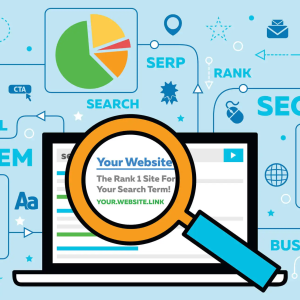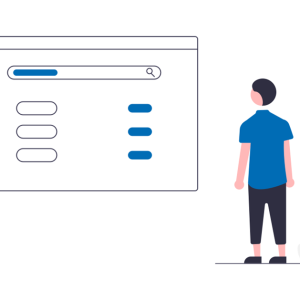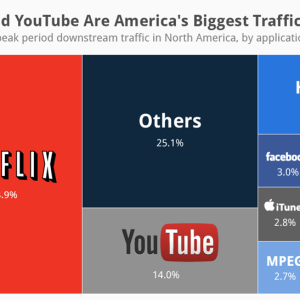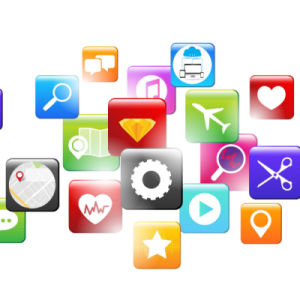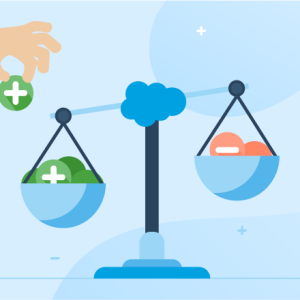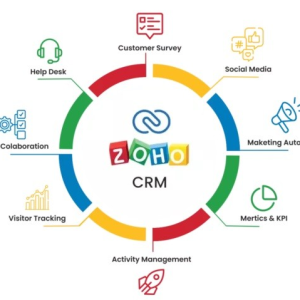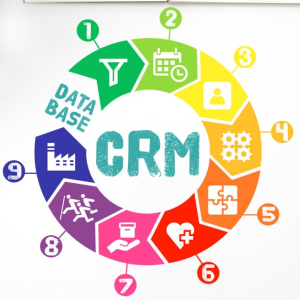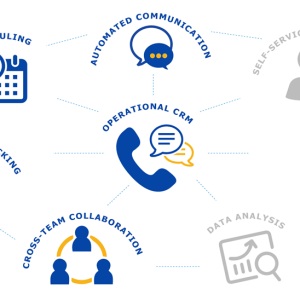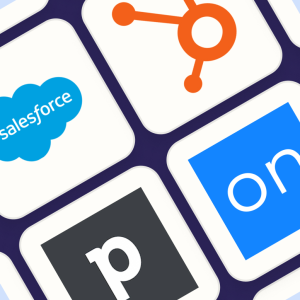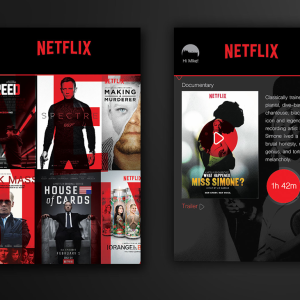Introduction To Segmentation
The multifaceted concept of segmentation in the realm of marketing encapsulates the systematic approach of subdividing an extensive market into smaller, more manageable clusters, each distinguished by their unique needs, preferences, or characteristics. This highly intricate procedure enables businesses to hone in on and tailor their marketing campaigns and offerings to suit the specific demands of each segment, fostering a more targeted and effective use of resources.
Various factors, such as demographics, psychographics, behavior, and geographic location, can be employed as the basis of segmentation, further complicating the already intricate process. By identifying and meticulously targeting these segments, businesses can gain deeper insights into their customers’ desires and fulfill their individualistic needs, leading to a heightened sense of customer satisfaction and increased sales, in turn, generating an enduring sense of customer loyalty.
Segmentation In Marketing Automation
Elevating your marketing automation strategy to the pinnacle of success necessitates the indispensable process of audience segmentation. Partitioning your audience into smaller groups that share specific characteristics engenders the creation of marketing campaigns that are tailored to individual needs, and by extension, more efficacious in their outreach. The advent of targeted marketing campaigns that are informed by audience segmentation imparts a competitive edge that is crucial to the success of modern marketing initiatives.

Benefits Of Segmenting Audiences
The all-encompassing concept of segmentation in automation marketing encapsulates the sophisticated process of dividing a vast and diverse customer base into specific groups distinguished by certain characteristics, such as demographics, behavior, or purchase history. This intricate segmentation strategy empowers businesses to create targeted marketing campaigns, characterized by a heightened level of effectiveness and efficiency.
The intricacies of segmentation extend to multiple facets, including:
- Increased Relevance: By customizing marketing campaigns to specific customer groups, businesses can create messages that are more relevant to their interests and needs. This heightened level of relevance can lead to increased engagement and conversion rates.
- Improved Personalization: Segmentation empowers businesses to personalize their marketing messages, taking into account the nuanced preferences and needs of different customer groups. This can make marketing efforts more effective and engaging.
- Better targeting: By focusing marketing efforts on profitable customer segments, businesses can optimize their return on investment. This is achieved by identifying the most lucrative segments and tailoring marketing efforts to appeal specifically to them.
- Increased Efficiency: By creating smaller, more targeted campaigns, businesses can achieve greater efficiency in their marketing efforts. This is achieved by avoiding broadcasting messages to a large, diverse audience, and instead targeting specific groups of customers with tailored campaigns.
- Better ROI: By leveraging segmentation to identify profitable customer segments and customizing campaigns to those segments, businesses can generate a higher return on investment from their marketing campaigns.
- Better insights: Segmentation provides businesses with a deeper understanding of their customers, enabling them to make more informed decisions about future marketing strategies.
Overall, the utilization of segmentation in automation marketing can facilitate the creation of more relevant, personalized, and effective marketing campaigns, while simultaneously optimizing efficiency and increasing returns on investment.
Segmentation Tools & Software
There are various marketing segmentation tools and software available, some examples include:
- CRM software: Customer Relationship Management (CRM) software leverages Customer Relationship Management strategies to scrutinize customers’ demographics, purchasing history, and other data points, enabling the business to segment their customer base accordingly.
- Marketing automation software: This type of software represents another type of technology, automating and streamlining the often cumbersome process of segmenting customers, using specific criteria such as behavioral or demographic factors to categorize customers with precision and sophistication.
- Surveys and polls: Surveys and polls provide yet another avenue for segmenting customers, gathering data from them and segmenting the results based on their responses.
- Data visualization tools: These tools work to transform vast amounts of data into more easily comprehensible formats, assisting businesses in segmenting their customers with clarity and accuracy.
- Predictive analytics software: This type of software presents a more advanced approach, utilizing machine learning techniques to mine data and predict customer behavior. By segmenting customers according to predicted behavior, businesses can tailor their marketing strategies in a more targeted and impactful manner.
- Social media listening tools: These tools can offer businesses insight into customer sentiment by tracking and analyzing social media interactions, granting the ability to segment their audience based on more nuanced criteria.
The wide range of marketing segmentation tools and software available affords businesses the opportunity to finely calibrate their strategies, drawing insights from their customer base with greater precision and effectiveness.
Here are a few examples of popular marketing segmentation software:
- Salesforce CRM: Salesforce, a widely utilized CRM software, is renowned for its segmentation capabilities, allowing businesses to delve into the depths of customer data to extract insights based on demographics, purchase history, and other pertinent criteria.
- Marketo: Marketo is a marketing automation software that boasts robust segmentation features. It permits businesses to slice and dice their customer base with an astute focus on behavior, demographics, and other criteria.
- SurveyMonkey: For gathering feedback from customers, SurveyMonkey is a formidable force, providing a popular survey software option. Not only can it help businesses gather information from customers, but also segment them based on their responses, paving the way for targeted marketing campaigns and personalized communication.
- Tableau: In the world of data visualization, Tableau reigns supreme, offering a formidable tool that helps businesses segment their customers based on specific criteria and analyze data more effectively. Its advanced features have earned it a reputation as a sophisticated and invaluable asset for any company looking to dive deeper into customer insights.
- Alteryx: Alteryx, a predictive analytics software that leverages machine learning techniques to predict customer behavior and segment them accordingly. Its advanced capabilities have set it apart in the crowded CRM marketplace, providing companies with a powerful tool for enhancing customer segmentation and engagement.
- Hootsuite Insights: Hootsuite Insights is a social media listening tool that empowers businesses to comprehend customer sentiment and segment their audience based on social media interactions. With its unique approach, it provides valuable insights into customer behavior, allowing businesses to make informed decisions based on the nuanced data gleaned from social media interactions.
Steps To Segment Your Audience For Targeted Marketing Automation
Identify Your Target Audience
To embark on the task of audience segmentation, companies must first identify their target audience. This involves digging into a multitude of characteristics that shape the audience’s identity, from the obvious demographics such as age, gender, location, and income level, to the subtler psychographics such as interests, behaviors, and values.
Only by comprehending the intricacies of their target audience’s needs and characteristics can a company construct a marketing strategy that addresses their pain points and motivators in a truly impactful way. This necessitates conducting comprehensive research into their demographics, psychographics, behavior patterns, and interests, which can then be distilled into a coherent understanding of their target audience.
Armed with this understanding, companies can proceed to tailor their messaging and content to speak directly to their audience, using marketing channels that they are known to use and developing products or services that meet their specific needs. Moreover, the identification of the target audience can also inform a company on how to price, package, and position their offerings, ensuring that every aspect of the marketing plan resonates with the target audience and drives tangible business results.
Collect Data On Your Audience

Upon the identification of your intended readership, the subsequent progression entails the gathering of data relating to them. Said data may comprise of particulars delineating their patterns of procurement, their conduct upon traversing your website, as well as their level of interaction with your brand across social media channels. With the accumulation of such intelligence, one may come to a superior comprehension of their audience, and subsequently exploit it to create distinct groups or segments.
There are several ways to collect data on your audience, including:
- Surveys: Surveys serve as an exceptional means of gathering valuable information about your audience, affording the opportunity to gain insight into their demographics, preferences, and behaviors. To achieve this, one can employ online survey tools or conduct surveys in person, accumulating rich and diverse data that can enhance one’s marketing strategies and refine audience segmentation with greater accuracy and efficacy.
- Website analytics: Website analytics offer another avenue for gathering data, providing valuable insights into how one’s audience interacts with one’s online presence. By analyzing data pertaining to the audience’s navigation habits, page visits, and dwell time on the site, businesses can gain a comprehensive understanding of their audience’s behaviors, enabling them to tailor their strategies accordingly.
- Social media analytics: Social media analytics, on the other hand, facilitate the gathering of data from social media platforms, and furnish information about audience interactions with one’s brand on these platforms. By studying data regarding the types of posts they engage with, the times of day they are most active, and their overall engagement levels, businesses can gain a nuanced understanding of their audience’s social media habits and tailor their marketing strategies accordingly.
- Purchase data: Finally, tracking purchase data provides insight into audience buying habits, such as average purchase value, preferred products or services, and the frequency of their purchases. By analyzing such data, businesses can identify trends and patterns in their audience’s purchasing behavior, and fine-tune their marketing segmentation to provide targeted and relevant marketing strategies, thereby enhancing customer satisfaction and bolstering business growth.
By collecting this data, you can segment your audience into smaller groups based on their characteristics and behaviors, and create targeted marketing campaigns that are more likely to resonate with each group.
Segment Your Audience
Upon the aggregation of data, the next logical course of action entails the segmentation of one’s audience into subgroups that exhibit specific characteristics. Said characteristics may include the history of purchase, the conduct of individuals upon browsing one’s website, as well as the level of interaction with one’s brand across social media channels.
By isolating these traits, it is feasible to craft marketing campaigns that are tailored to the unique needs and preferences of each subgroup, which are hence more compelling and efficient in reaching the specific individuals within the audience. To elucidate, if one segments the audience based on purchase history, it is plausible to formulate promotions that cater to customers who have recently made a purchase, or those who have not indulged in one in a protracted period. Conversely, if the audience is segmented based on website behavior, one can develop bespoke campaigns for individuals who have lingered for a substantial amount of time on one’s website, or for those who have only browsed a scant number of pages.
Overall, the segmentation of one’s audience enables a superior understanding of their preferences and characteristics, hence facilitating the creation of targeted campaigns that are more likely to resonate with each subgroup.
Create Targeted Marketing Campaigns
Upon segmenting your audience, you can leverage this valuable information to construct precisely targeted marketing campaigns. These targeted campaigns carry immense potential to captivate and engage specific segments of your audience. By segmenting your audience based on various factors such as demographics, behavior, or interests, you can attain a deeper understanding of their needs and preferences. This understanding can then be employed to craft bespoke content and promotions that are more likely to reverberate with each of your audience’s segments.
For instance, you can exploit segmentation to create bespoke email campaigns that are tailored explicitly to different segments of your audience. In addition, crafting distinct social media posts for different segments of your audience is another way to personalize your marketing campaigns. Segmentation based on interests can also be an excellent way to engage specific segments of your audience with targeted social media posts that resonate with their individual interests and preferences.
Altogether, targeted marketing campaigns can work wonders in enhancing your ability to connect with your audience, boost engagement, and drive more conversions. They provide a means to communicate with your audience through an individualized message that is specifically tailored to their distinctive needs and preferences.
Measure And Analyze The Results

In the end, the measurement and analysis of the aforementioned metrics are pivotal in the pursuit of insightful revelations that facilitate adjustments to one’s targeted marketing campaigns. For instance, if one discerns low open rates, one must reassess the subject line or sender name of their emails. In a similar vein, if one’s click-through rates are lacking, one must contemplate alterations to the design or content of their advertisements. Lastly, if one’s conversion rates are wanting, a reassessment of the messaging or offer proffered in their campaigns is necessary.
Additionally, it is also imperative to exploit cutting-edge tools such as A/B testing to experiment with differing permutations of campaigns and ascertain which elements are optimal in driving results. Furthermore, by employing data analytics tools, one can isolate and analyze distinct subgroups within their audience, which enables a superior comprehension of their inclinations and preferences, hence rendering it feasible to create campaigns that are custom-tailored to each subgroup’s distinct characteristics.
To summarize, the undertaking of measuring and analyzing the outcomes of one’s targeted marketing campaigns plays a pivotal role in establishing the efficacy of their endeavors, and subsequently facilitating data-driven decisions that augment their return on investment. The tracking of specific metrics, coupled with the deployment of experimental variations, and the analysis of audience behavior, all coalesce into a cohesive framework that enables the optimization of campaigns and the attainment of superior outcomes.
In this vein, it is vital to obtain a comprehensive overview of the results over a substantial duration to effectuate meaningful changes to one’s marketing strategy. By doing so, one can make informed decisions that align with the objectives of their campaign, and exploit their data to propel their endeavors to new heights.
Conclusion
Dividing your audience into smaller groups based on certain characteristics, like demographics, behavior, or interests, is what’s meant by audience segmentation. This methodology is a powerful mechanism for crafting ultra-targeted marketing campaigns that can pierce through the noise and resonate with specific audience segments, culminating in heightened levels of engagement and conversion rates. The process of collecting data on your audience and rigorously analyzing the outcomes of your campaigns can be instrumental in continually refining and optimizing your overall strategy. Ultimately, audience segmentation is an indispensable first step in constructing a winning marketing automation strategy that can deliver tangible business results.
Rev up your marketing endeavors and amplify productivity by harnessing the power of 12 Channels’ all-encompassing marketing automation solution. Our platform features a plethora of services that are seamlessly integrated with the added perk of chatbots. So why wait? Unleash your potential by delving into our services now and uncovering how 12 Channels can expedite your outreach to your target audience, and catalyze the attainment of your marketing objectives. Contact us expeditiously!

